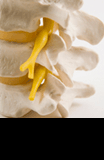Choosing the right wheelchair
There are many different types of wheelchairs on the market and they can vary in price and suitability. Before you purchase a wheelchair these are a few things you should consider first.
You may be entitled to a wheelchair on the NHS
Every area in the UK has a local NHS wheelchair service. This is an NHS service providing free assessment by a professional clinician and provision of wheelchairs to people with mobility needs.
The NHS wheelchair service is for every one of all ages and conditions and therefore is under resource restraints. This means that most services implement criteria to ensure that they can provide the most appropriate wheelchair seating to those who are in most need. This also means that there may be a waiting time before you are assessed and the equipment is provided.
Many NHS wheelchair service prioritise people who are living with Motor Neurone Disease which can reduce the waiting time, but this is not always the case. Your GP, Consultant or local therapists can refer you to your local NHS wheelchair service and it is advisable for this to be done if you are beginning to experience mobility problems.
Walking aids, wheelchairs and mobility scooters - NHS website
Other sources of wheelchair provision
The Oxford MND Centre can provide an assessment by an occupational therapist and may be able to provide you with an appropriate wheelchair seating system and / or liaise with your NHS service.
The Red Cross can loan out basic wheelchairs to people for short periods, for example for a holiday. They do not charge for this but usually like a small donation. This is a useful service; however, if you are experiencing difficulty with your mobility, it is advisable to have your needs fully assessed and longer-term arrangements made.
Need for assessment
If you wish to proceed to purchase your own wheelchair it is important that you have a postural assessment completed by an appropriate health care professional (Occupational Therapist / Physiotherapist) in order to ensure your purchase is right for you. This can be done through the Oxford MND Centre, NHS service or a private therapist.
Types of wheelchair
Manual - Transit Chair / Lightweight Self-propelling
The basic manual wheelchair you may choose when you are beginning to have mobility problems has limited postural support but is lightweight and easy to fold up to put into the boot of most cars.
If you have this type of wheelchair and are beginning to find yourself sitting at the front edge of the seat with little support in your lower back, it may be that this chair no longer supports your posture adequately.
As muscles in the trunk, shoulders and neck become weaker, it can be more difficult to maintain an upright posture against gravitational forces, meaning your head falls forward or your trunk slumps to the side if you sit with your bottom to the back of the chair. This may be an indication that you would benefit from a wheelchair with a Tilt in Space facility.
Tilt in Space
In wheelchair seating this means that there is a mechanism that will tilt the whole seat backwards. The seat to back angle is maintained to maintain flexion at the hips (to help keep a sitting position).
With the seat tilted backwards, gravity is recruited to help keep you sitting into the chair with your bottom at the back of the seat, ensuring you have support through your thighs, buttocks and back.
Tilt in Space is available on manual and powered wheelchairs. The tilt mechanism means that the wheelchairs are larger than the upright chairs, and they do not fold as easily to fit into the boot of a car.
Powered wheelchairs
These chairs provide the user with more independence in their own mobility if they are unable to self-propel a manual chair. Traditionally they are driven using a joystick controller, but other controls are available. The most suitable control for you should be assessed by an appropriate healthcare professional.
Power chairs can come in all shapes and sizes, and with a Tilt in Space facility. It is not as easy to put a powered wheelchair into your car as a manual one due to the batteries and the weight of the chair.
It is possible to have adaptations to your car that will to lift the chair in and even accommodate the wheelchair user in the vehicle whilst sitting in their wheelchair.
Some NHS wheelchair services provide powered Tilt in Space wheelchairs, but all will require an assessment, and some may have set criteria you need to meet into to qualify for a powered chair.
There is more information on the MNDA website:
Further information
If you have any questions about wheelchair seating you can contact the Occupational Therapist at Oxford MND Centre, or your local NHS wheelchair service.




























































